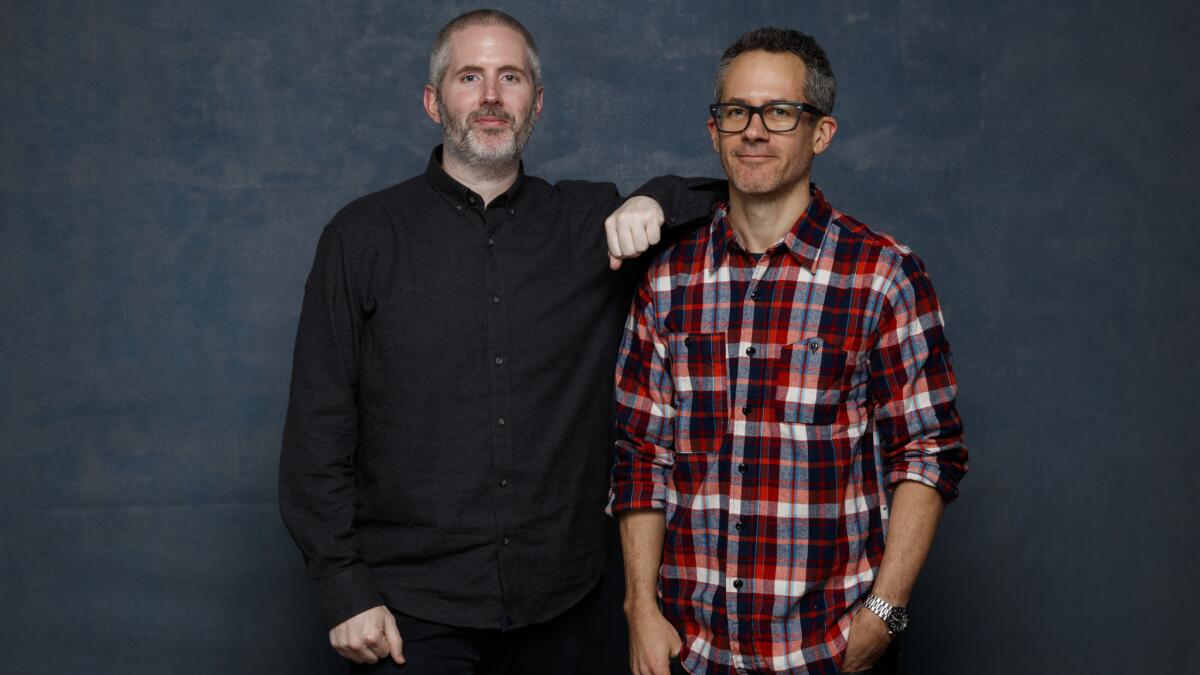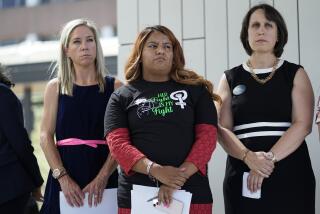Post-apocalyptic action film ‘Bushwick’ imagines a present-day civil war. It couldn’t be more timely

Six minutes into “Bushwick” (after a three-minute-long shot of the Brooklyn skyline), it’s clear that the New York City borough is under attack.
The camera, which unflinchingly captures the action in a series of single takes, follows grad student Lucy (Brittany Snow) as she navigates the nearly unrecognizable streets of the titular neighborhood, newly transformed into a battlefield.
It’s not until halfway through the film that we find out it’s actually Texas that is invading the urban neighborhood, which isn’t often in the film and television spotlight and until now has been best known for its increasing gentrification and large population of hipsters.
“There’s this perception of the people there, that maybe these aren’t the real New Yorkers,” noted “Bushwick” co-director Jonathan Milott. “We’re focusing on just one person in this borough that is not the main part of New York, we think it’s more interesting.”
The film, which opens in Los Angeles on Friday, debuts less than two weeks after the Charlottesville, Va., unrest. With white supremacist rallies still planned in many cities across the country, it’s not so fantastical to imagine a second civil war erupting in 2017 America.
We caught up with “Bushwick” directors Cary Murnion and Jonathan Milott to talk about Charlottesville, the apocalypse and how Los Angeles might be affected by an all-out civil war.
Why Bushwick as the backdrop of this film?
Cary Murnion: There’s two main reasons. One was I’d lived in Bushwick for five or six years back [around] 2007 and I love the neighborhood, I love the people. I think the people there would fight back if someone was trying to invade their neighborhood. So I thought it was a good setting for this kind of story. And strategically, if you were going to invade New York City, you wouldn’t go right into the heart of Manhattan, you would find a soft spot first, put down your forces, get yourself ready and then try to surround Manhattan. Also, there’s not many films that are actually set in the boroughs and that was another reason why we thought it’d be more interesting. I don’t think much of Brooklyn, and especially Bushwick, has ever been seen in a film this sort of way.
Why do you think so many apocalyptic films are framed around New York?
CM: It really is a true melting pot of people so I think there are lots of different perspectives and different stories you can tell.
Jonathan Milott: And it’s just the reality, there’s a reason why the 9/11 attack happened in New York City and Washington, D.C.
CM: Washington, D.C., is obviously the capital of the United States, but New York City is kind of thought of as representative of the United States. As in, if you can take down New York City, you can take down the rest of the country.
How do you think Los Angeles would be affected in this hypothetical world?
CM: With the whole state of California being almost the model state of liberals, to take Los Angeles would be representative of taking down California. And also taking down Hollywood would be huge because I think that’s what they’d think of as [the place responsible for] getting the message out to liberals through movies.
How relevant does this film feel in the wake of Charlottesville?
CM: It’s scarily relevant. We started this movie… we filmed it in 2015. We started thinking about this movie back in 2009 when [then-Gov.] Rick Perry made this horrible statement where he thought Texas should secede from the United States. So we’ve been thinking about this for a long time. Back when we started it, we thought of it as a far out kind of idea. Like a big what if, a huge what if. And now it seems very close to reality. So it’s sad.
JM: And even though we definitely set out to make an action movie that is entertaining, the way we filmed it with long takes, the way we concluded it, we purposely made decisions along the way to try not to glorify violence. To try to have an anti-violence message that maybe is not hitting you over the head like an antiwar film.
CM: We’d hoped that the movie would be more of a cautionary tale, because in the end of our movie there’s no winners. We hoped to at least communicate that violence begets violence and it’s not a means to an end. Seeing what happened in Charlottesville is a perfect example of what happens when violence explodes and people take it to the extremes. And I think it’s good to have a movie that can be an outlet to experience that, but it’s also sad that it’s happening right in our backyard.
Do you think that people still have an appetite for political thrillers when they can get their share of anxiety from the news?
CM: I think that [question] came out with “Detroit” because I’ve heard how amazing that movie is and yet people aren’t going out to see it. Hopefully [our movie] has enough of that escapism where it is an action movie first with political undertones that goes along with it. I don’t think it’s overt. I think this movie is a reflection of the times but hopefully it’s a movie that will live on past this time.
JM: We have our own political opinions, but we tried to keep [the film] a little bit more of a question that we’re raising for people. So no matter what side you’re on, if you watch this, hopefully you come away with more questioning of this type of action, this type of violence, as opposed to preaching one way or the other.
The film calls to mind post-apocalyptic media like “The Walking Dead,” “The Purge” and “Call of Duty.” What films, shows or other forms of media informed this portrayal?
CM: Video games weren’t something that we specifically referenced. In terms of other films, one of the big references for us was “Children of Men,” with not only the long-take stuff but just the fact of taking what is essentially a sci-fi idea and trying to ground it and make it something that you can actually believe. And then stylistically it’s nothing like it, but “Gravity” was another one where we’re following two people who are put into a very extreme situation and they have to figure out how to get through it piece by piece.
JM: With “Walking Dead” it’s kind of similar in that the characters are unaware of what’s going on. In “Walking Dead,” when Rick comes out of his coma and nobody is around, he has to kind of figure things out himself, which I think mirrors what we’re doing. When you’re on the ground in this type of situation, things are not as obvious as they might seem and I think that’s something we wanted to address with our characters. There is confusion, there are no easy answers, you don’t know who to trust, and in fact you can’t really trust anybody. So there are some interesting parallels.
What was the thought process behind the single-shot style of shooting?
CM: To immerse the audience in this neighborhood, to really make you feel like you’re with Lucy the whole time. We wanted you to feel like you’re in Brooklyn and experiencing this like Lucy did. The second reason is … the way not to glorify violence is to let the takes play out. It’s not going to always be pretty, it’s not going to always be perfect and it’s going to be messy.
JM: I think it’s another aspect that might be a little bit different from your typical action movie because usually you’d shoot somebody and you’d cut away. Whereas with this, if someone gets shot or someone gets hurt, you’re just stuck with that and you have to see how they deal with the repercussions of that. It makes it more tangible in a way.
CM: We also thought it would be a fun ride in the sense of this intense experience that doesn’t give you a break. I think there’s nine hard cuts in the film total and we feel like that was the maximum that we needed to give people a kind of little bit of respite from this experience. We wanted to keep them on edge for the whole time.
follow me on twitter @sonaiyak
More to Read
Only good movies
Get the Indie Focus newsletter, Mark Olsen's weekly guide to the world of cinema.
You may occasionally receive promotional content from the Los Angeles Times.











